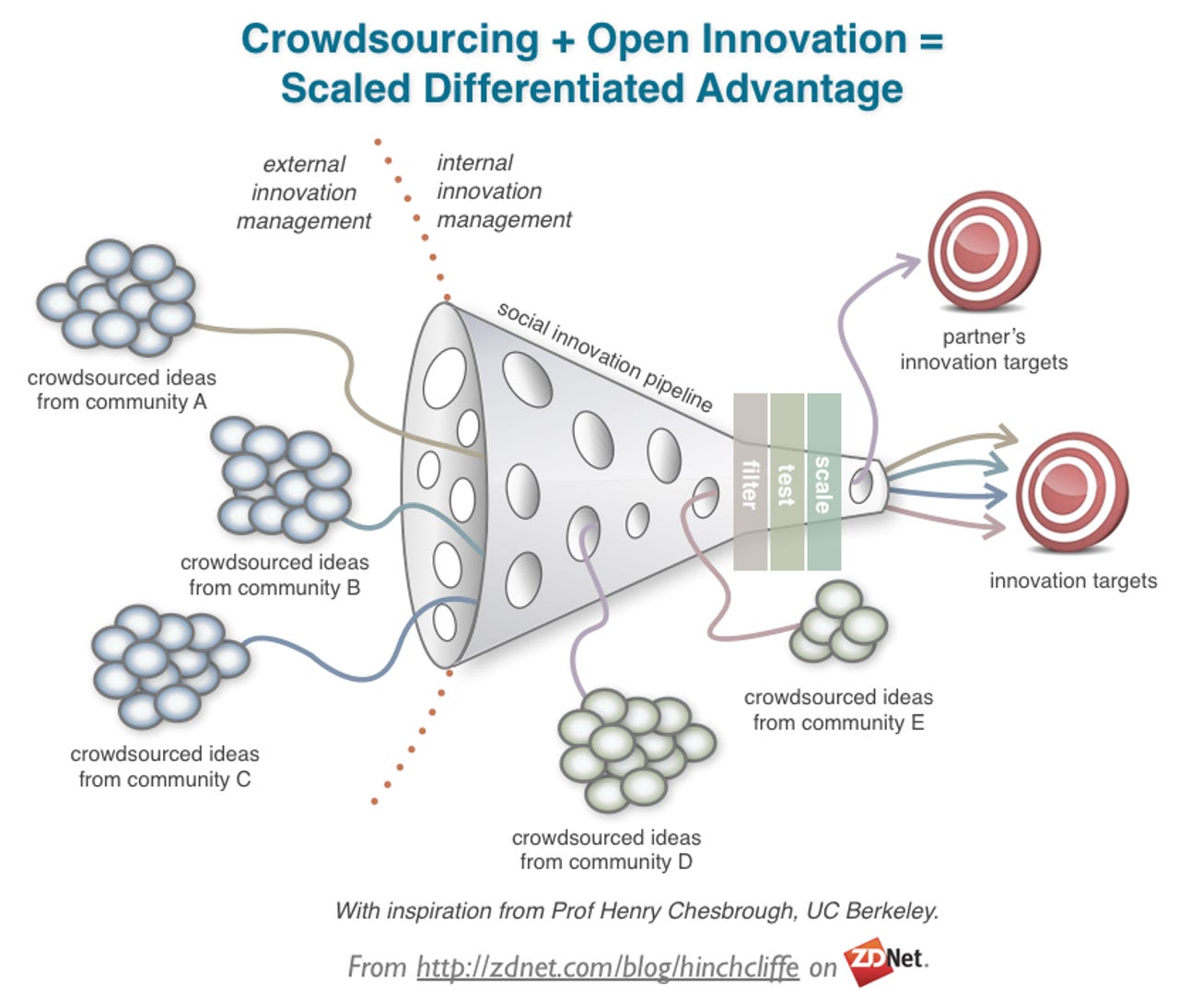Can technology improve business innovation?

Few would argue that software has crawled into virtually every nook and cranny of modern life, leading to more than a few prognostigators to claim that it's now eating the world.
As it matures, the growth sectors of the software industry have long moved away from broad horizontal functions like productivity or document management and settled in niche areas like specific verticals or higher-order functions like enterprise resource planning (ERP), business intelligence, or customer relationship management (CRM). In short, software is finding its way into practically every aspect of our lives and continues to grow.
So it sometimes seems that just about anything can be improved by incorporating the latest high tech gadget or a new app that can solve that nagging little problem for your business. However, there do seem to be a few important challenges that are stubbornly resistant to the siren call of today's startup mavens or enterprise software vendors. One of these, as it turns out, is the process of open innovation.
Yet even this vital functions, as we'll see, can be aided and abetted by technology. In fact, one thing that we've learned about IT over the decades is that in general the more freeform and complex a problem is, the harder it is to deliver a pure technology solution. Innovation is really the classic example of this: Computers aren't very good at creativity by themselves, but if one can combine the right type of supporting technology with a few ingenious people, then truly interesting outcomes can result.
For its part, the Internet itself has greatly accelerated general improvement in the field of innovation. By connecting millions of people with great ideas to new pools of resources that are able to help realize them, a pretty long list of impressive results have accumulated over the years. Of course, the darling these days in open innovation specifically is crowdfunding (which has led to the proverbial Cambrian explosion in related startups), where the concept is that anyone with a good idea can come to the community and try to convince them to fund their idea individually.

But this is just the latest in a long line of success stories: Crowdsourcing as matured in general to become a fairly repeatable and reliable process for harnessing innovation and creating outcomes hard to beat using just about any other method. This of course, is where the discussion about social business, another conversation about how to better connect to one's stakeholders via social media for business purposes, intersects directly with today's increasingly sophisticated world of open innovation.
Together, these two disciplines seem to be showing the power of people and networks in scale to drive great collaborative outcomes.
For some then, this story might appear to take on a familiar pattern: The consumer world en masse devises a better way to do something than the traditional business world by using the vast living laboratory of the Web, and it then becomes a leading new model for accomplishing said activity. This has happened with software development (open source), communication (social media), smart mobility and SaaS (consumerization), business models (collaborative economy), and perhaps now with innovation.
These days, it often seems like the enterprise is the last bastion to receive the latest in technology advances.
IT Departments Losing Control of Innovation
Unfortunately, there's now growing evidence that the classical model of IT has also become quite challenged when it comes to delivering technology innovation to the business. A significant new survey of IT organizations by the Corporate Executive Board has found that IT departments are losing control of technology innovation within their organizations. Instead, the lines of business are picking up the slack, having far more capacity and urgency to apply new technology to their local challenges.
Indeed, this general loss of control by IT in recent years has essentially become the central narrative of the shifting role of the CIO, the recent ascendancy of the CMO, and the emergence of the chief digital officer (CDO), all in an attempt to grapple with the digital diaspora taking place within most companies today.
So what can IT departments do to get in front of the rapidly evolving open innovation story and bring the latest tools and techniques into the organization? Fortunately, the answer isn't as complex as one might think, though it does require thinking about enabling the innovation process, rather than constraining the ingredients. That's not to say there aren't important ramifications to manage when it comes to a variety of related topics such as intellectual property control and information security.
Building An Open Innovation Capability
We can summarize the landscape of new digital tools and techniques for open innovation into four specific buckets. These are platforms, communities, methods, and supporting functions:
- Platforms for open innovation. New networked technologies, particularly ones based on social media, have greatly increased the richness and reach of innovation programs. While open innovation is possible without these tools, they can considerably reduce cost while increasing scale and scope. Leading examples include Spigit, IdeaScale, BrightIdea, OpenIDEO, and BrainBank, but there are many others.
- Open innovation communities. Beyond technology platforms, there are pre-existing for-profit and non-profit innovation communities for many disciplines and industries that can be tapped into to drive innovation programs. Well known examples include Innocentive, IdeaConnection, and NineSigma, to name just a few.
- Open innovation methods. There are two main axes here: Business function and collaborative method. The business function might be product development, software development, business development, marketing, sales, fund raising, and so on. That's because each business function has a unique set of innovation concerns that often requires either special supporting platforms and/or particular communities that must be cultivated or tapped into. The second is the specific collaborative method to create the targeted innovation. This is often one of two major forks in the road in terms of creating the result: a) Either a single winning result from many individual contribution or b) one individual joint work product from many incremental contributions.
- Supporting functions. Although IT can help lead the business when it comes to open innovation, it must make sure the platforms, communities, and methods are supported by a robust set of business functions to protect the organization while enabling rapid co-creation. These include the smart and lightweight application of shared idea ownership (the best open innovation programs often ensure everyone who contributed can benefit), the security of the enterprise information that often must be shared for open innovation to be successful, and finally application and community selection and management.
While BYOD and BYOA are becoming the standard in many organizations and is putting more control in the hands of the business, the IT department still has a chance in relatively nascent areas like innovation to help the organization better cultivate new ideas and advances.
What's even better is that even though innovation isn't necessarily a core competency of the IT department, technology certainly is. As successful innovation becomes more dependent on the effective use of the latest social software and online communities, this might be one area where IT can lead the business effectively for the long-term, by providing a proven palette of tools, technologies, and supporting functions to make the business successful with open innovation as a standard part of the next generation of service delivery.
Backstory: A lot of this thinking was spurred by my recent session on social business and open innovation at Dreamforce 2013 in San Francisco for the innovation track of the conference. You can view the Slideshare deck, "How Social Business Is Reinventing Open Innovation" for more details. Thanks to Karthik Chakkakarapani at Salesforce for the invitation to speak.
Related:
CIOs lose hold of the purse strings as departments go it alone with tech projects
Digital diaspora in the enterprise: Arrival of the CDO and CCO
The evolution of enterprise software: An overview